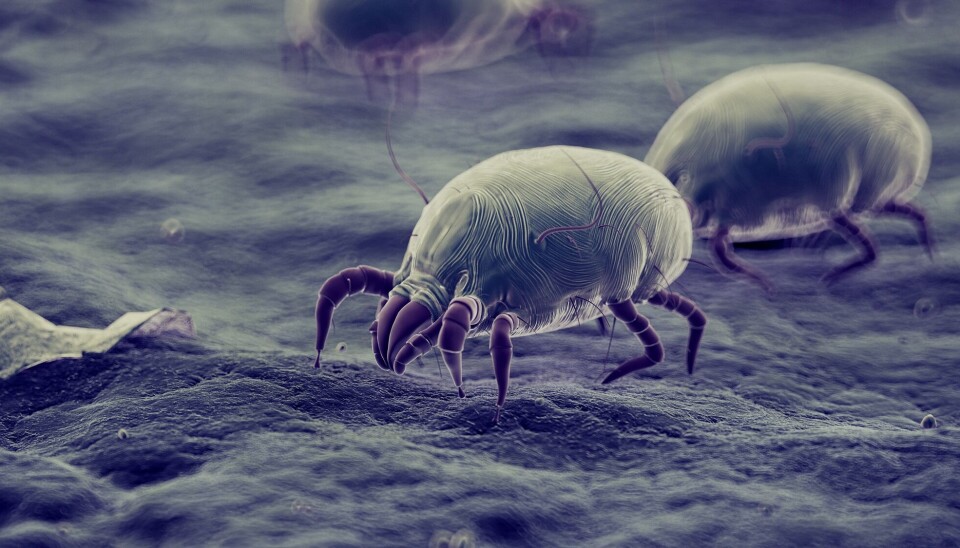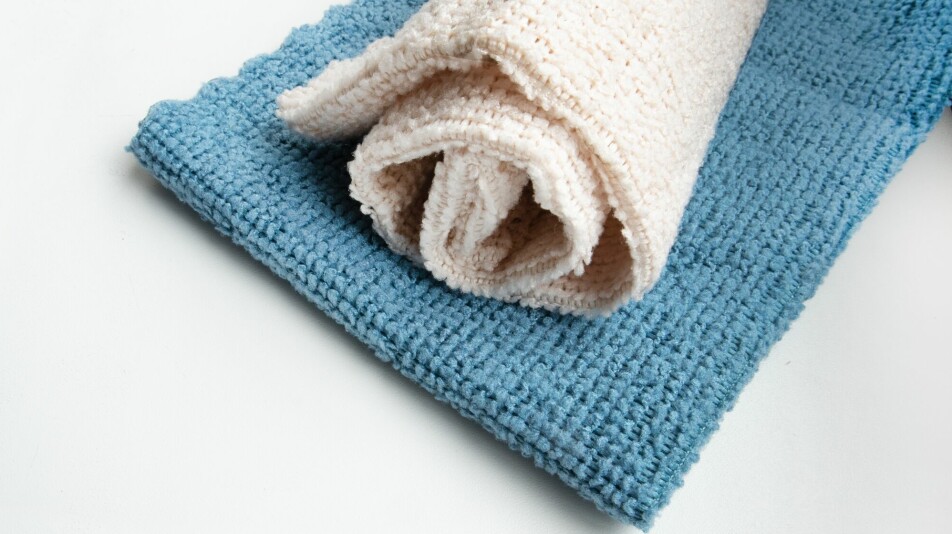
Where does all the dust come from?
ASK A RESEARCHER: The dust floats and falls. It settles on all surfaces. You wipe your surfaces and vacuum, but it comes back. In huge quantities. Everywhere. Where does it come from?
Dust is a mixture of all sorts of things, according to an American dust researcher.
Dust is mostly made up of skin, a Norwegian dust researcher claims.
How much dust you have at home depends on several things: Whether you live alone or not. If you have furry pets. How old your home is. How your home is decorated. Where you live. What season it is. And not least how often you clean.
Dust is skin
“Dust mainly comes from ourselves. It is made up of dead skin cells,” Steinar Nielsen says. He researches dust at SINTEF in Trondheim.
“Our entire outer skin cell layer is replaced in three days. It quickly adds up to a few square metres, so to speak,” Nilsen tells sciencenorway.no.
These tiny skin cells fall off us at high speed, up to half a million tiny particles per minute. More movement results in more skin cells falling off, the researcher tells us.
The more people you live with, the more skin particles fall to the floor.
Dogs and cats also contribute to the amount of dust with their own skin cells. The more animals, the more dust.
But there are other sources of dust than just skin.
Food and textiles
When we eat, crumbs of food end up on the floor. These crumbs are broken down into dust if you do not sweep or vacuum.
Food crumbs also attract insects, small flies and organisms that live in your home. When they die, they dry up, break down – and turn to dust.
If you have a lot of carpets, curtains, and upholstered furniture, these are efficient storage places for dust. In addition, the textiles emit their own dust when the fibres are loosened and spread.
Your clothes create fluff and emit particles that turn to dust. Fleece garments emit microfibres.
Dust mites
Bedding and mattresses are not only gathering places for dust, but also for mites.
Tiny dust mites feed on dead skin cells. They move in flocks around the house, according to one study, but are especially fond of our sleeping places. You probably have millions of them in your home.
A regular, healthy dust mite poops 20 times a day. The stool can turn to dust, according to the website Citeq biologics.

From above and outside
Dust also enters through windows, doors, cracks, and valves.
“There is a lot of dust outside during specific periods of the year,” Nilsen says.
If you live in a polluted or busy area, more dust will enter your home. This dust comes from industry, car tires and asphalt.
Older houses let in more dust than new homes.
“Most of us now live in modern buildings, which do not let in as much dust from the outside,” Nilsen says.
But dust can also fall from your ceiling, according to Nilsen.
In warmer countries, where windows and doors can be left open much of the day, researchers have calculated that most of the dust comes from outside.
You also bring dust into your home. For example, pollen. Every spring and summer there is a lot of pollen in the air. It attaches to your clothes, shoes and hair. When you get home, you sprinkle dust around your house.
Chemicals in dust

An American dust researcher, Paloma Beamer, tells Time Magazine that it is almost impossible to make a list of all the ingredients in dust, but many researchers try.
Some ask people to send them full vacuum cleaner bags, other researchers go home to people and pick up a representative sample of dust, while others study dust in laboratories.
Then the dust is analysed.
There they find residues of chemicals. These are particles from things we use ourselves, such as detergents and electronics. And from floor coverings, paints, flame retardants, and building materials, according to an article in Chemical Engineering News.
Some of the chemicals are more toxic than others but are only found in tiny amounts.
Dust is more dangerous for those who are allergic to it.
Allergic to dust or mites?
Most of us can safely inhale the dust in our homes. However, large amounts of dust floating in the air can be problematic for asthmatics and others, according to the Norwegian Institute of Public Health.
A runny nose and eyes, especially at night, as well as eczema may be symptoms of allergy to dust mites. According to the Norwegian Asthma and Allergy Association (link in Norwegian), as many as 14 per cent of us may be affected by dust mite allergy.
The best thing you can do is to clean and vacuum. But how do we clean most efficiently?

Dry against dry
Malin Skaar at Orkla warns against the mistake many people make: wiping dust with a damp cloth. The dust will clump together, and it will be difficult to get rid of it all.
“The best thing is always to remove dry with dry. This means that you should use a dry microfibre cloth, dry mop, broom or vacuum cleaner,” Skaar writes in an e-mail to sciencenorway.no.
She works with consumer services at Orkla, a major manufacturer of cleaning products.
“Afterwards you can wash over the area with a suitable detergent if needed,” she adds.
Many factors affect how much dust you have in your house.
“There is therefore no definitive answer to how often you should dust your home. But in general, there will probably be a substantial build-up of dust within 1-2 weeks. To ensure the best possible indoor climate, it is wise to get rid of it as regularly as possible,” Skaar writes.
———
Translated by Alette Bjordal Gjellesvik.
Read the Norwegian version of this article on forskning.no
































